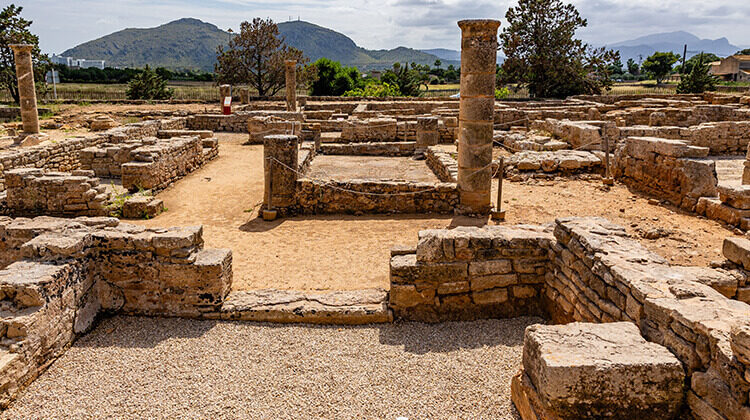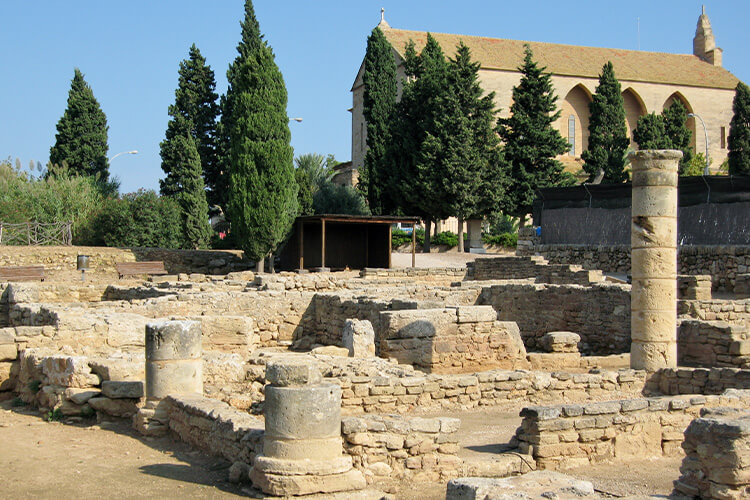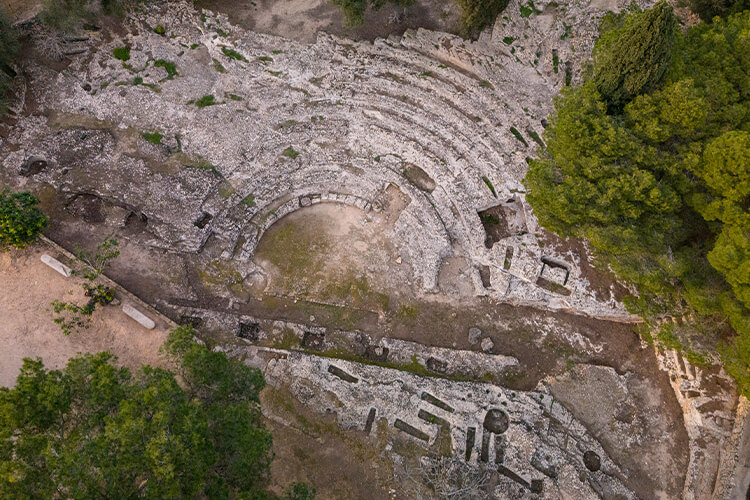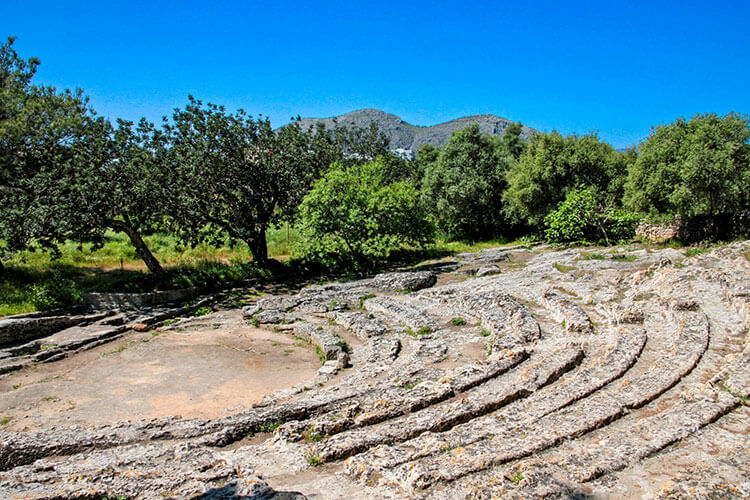
In the heart of Alcúdia lies Pollentia, a fascinating archaeological site that takes us back to Roman times in Mallorca. If you are in the area, don’t miss this little trip back in time.
Pollentia History
Pollentia was founded after the conquest of Mallorca by the consul Quintus Caecilius Metellus in 123 BC, which boosted the island’s urban development. Thanks to its strategic location between the bays of Pollença and Alcúdia, Pollentia became the most important city in the Balearic Islands during Roman times. The historical records found at the site date from 70 or 80 BC until the 6th century AD, when the city became a necropolis due to its decline.

Curiously, this site remained forgotten for centuries until it was rediscovered in the 17th century. At that time, numerous coins and valuable artefacts were unearthed, marking the beginning of excavations.
Pollentia was designed with a grid layout oriented from north to south, facilitating circulation. It also had an advanced network of drinking water and sewage systems. The city also had two ports: one in the bay of Pollença and a larger one in Alcúdia, which favoured commercial activity.
Ruins of Pollentia
Today, we can explore the impressive ruins of Pollentia, which allow us to imagine the greatness of this Roman city. During the visit, you can explore three key areas: La Portella, the Forum, and the Theatre.
La Portella
La Portella was the residential area of Pollentia.

The remains of three Roman houses, known as domus, and the streets that connected them are still preserved. One of the most outstanding houses is the House of the Two Treasures, which still conserves its centralised structure through the atrium and its main façade, which faced onto Porticada Street, where the columns of the porch remain. On the other side of the street is the House of the Bronze Chief, famous for the discovery of a bronze figure that is exhibited in the Museum. The Northwest House, although deteriorated, preserves the foundations on which fragments of the Roman wall from the 3rd century AD can still be seen.
The Forum
In the centre of Pollentia lies the Forum, the ancient city square steeped in history that opened its doors to the public in 2002. Every summer, excavations continue to reveal more secrets about life in this city. The Forum has been key to understanding how Pollentia was organised. Its history spans from its earliest days in the 1st century BC to its decline, when it became an extensive necropolis. Among the most interesting finds are the imposing Capitoline Temple, two minor temples, a large commercial area called Tabernae, and various ornamental elements that take us back to the grandeur of the Roman city.
The Theatre
The theatre of Pollentia, located to the south of the city and close to the ancient Roman port, is one of the site’s most emblematic monuments. It was initially thought to be Greek in style, but after excavations in 1952, it was determined to be a Roman theatre from the 1st century AD.

The most impressive thing is that it was excavated directly into the rock, taking advantage of the natural unevenness of the terrain. Despite the passage of time, three key elements can still be distinguished: the cávea (the area for the spectators), the orchestra (where the band was located), and the escena (the stage). Although the upper part of the cavea has not survived, it is thought that it may have been made of wood.

Today, the theatre comes to life again in August when it becomes the stage for the cultural event Agosto a la Fresca, organised by the Alcúdia Town Council.
Pollentia Monographic Museum
If you visit the Pollentia Monographic Museum, you will discover a fascinating collection of objects recovered during excavations. The Museum, located in the historic centre of Alcúdia (Carrer de Sant Jaume, 31), in a 14th-century building, will give you an in-depth insight into life in Pollentia. The exhibition is organised into two main areas: the private sphere, with everyday objects such as kitchen utensils, crockery, jewellery, and items for games, and the public sphere, which is divided into three areas: life in the Forum, performances, and the funerary world.
Useful information:
City of Pollentia
Opening hours:
Monday to Friday: 9:30 am to 9:00 pm
Saturdays and Sundays: from 9:00 am to 1:00 pm
Holidays: closed
Admission: 4 €.
If you are interested in learning more about this fascinating place and exploring visualisations of what it was like in its time, we invite you to visit this page: http://pollentia.turismoqr.it/index.php
Pollentia Monographic Museum
Opening hours:
Tuesday to Sunday: 9:30 am to 3:00 pm
Saturday: from 9:30 am to 11:30 am
Monday closed



Leave a Reply